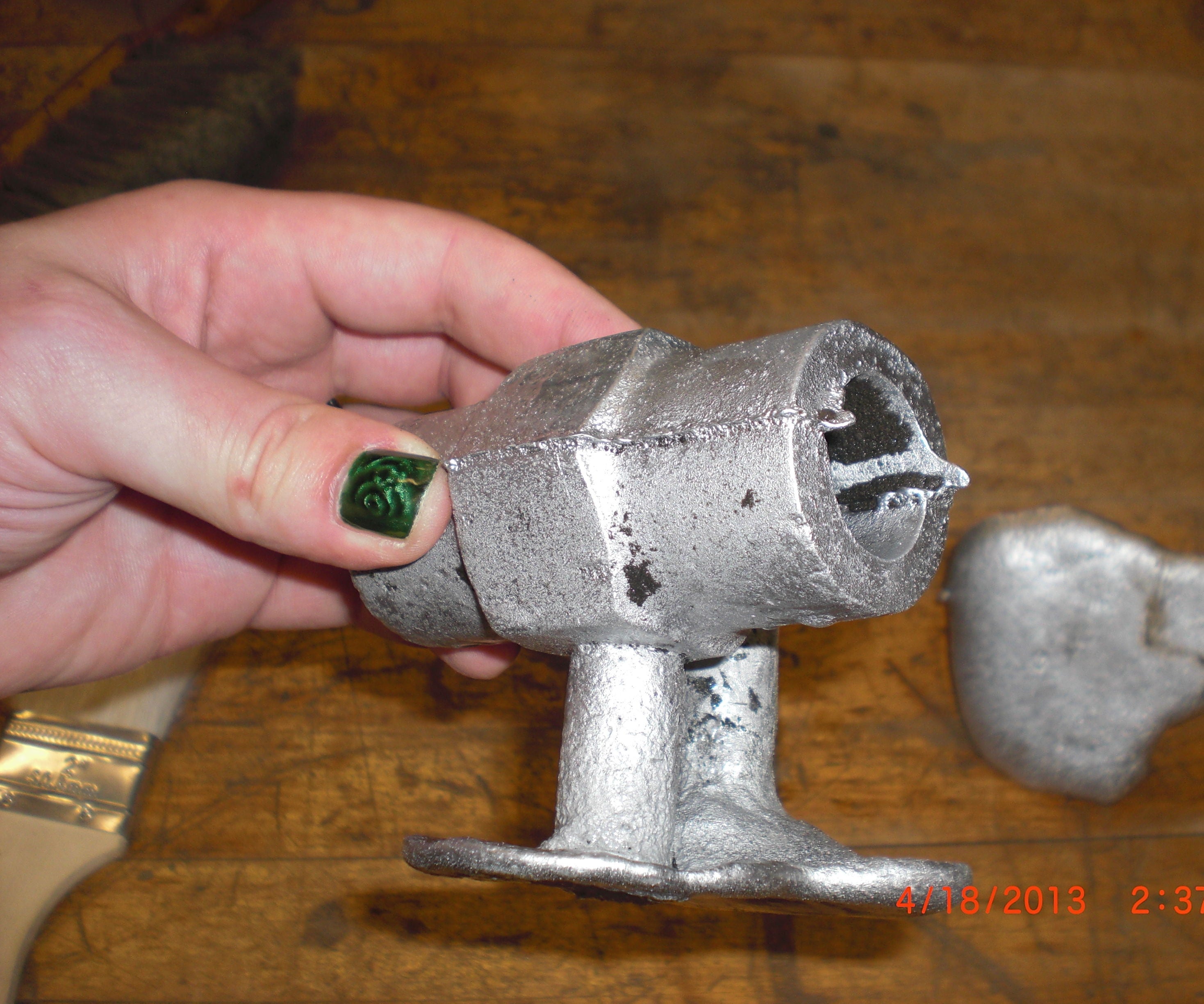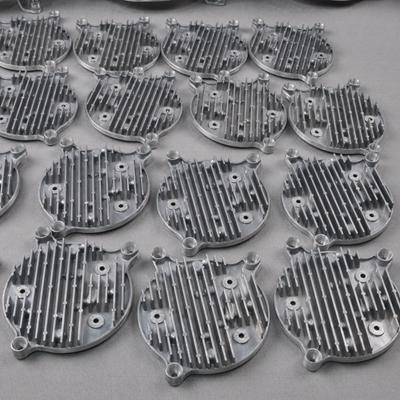Past to present of aluminum casting
The Diverse Utilizes of Aluminum Casting in Various Industries and Their Influence On Technology
Aluminum casting offers as a basic procedure throughout numerous industries, affecting style and production approaches. Its corrosion-resistant and lightweight attributes improve performance in automobile and aerospace applications. Additionally, it facilitates innovative durable goods and progressed electronic devices. The adaptability of aluminum is likewise apparent in building and construction and infrastructure jobs. As markets develop, the effects of aluminum casting on future modern technologies require closer assessment (Precision aluminum casting). What advancements lie in advance in this dynamic field?
Automotive Sector: Enhancing Efficiency and Efficiency
The automotive sector significantly welcomes aluminum casting to improve both efficiency and performance in car production. This shift is driven by aluminum's lightweight residential properties, which contribute to improved gas effectiveness and decreased exhausts. By replacing larger products with aluminum parts, producers achieve significant weight decreases, assisting in the general style of modern-day vehicles.
Aluminum casting enables for complex designs that can enhance aerodynamics, additionally improving performance. The ability to create intricate components in a solitary casting process minimizes the demand for numerous elements, enhancing setting up and lowering manufacturing expenses.
On top of that, aluminum's resistance to rust prolongs the lifespan of automotive parts, supplying lasting reliability for consumers. As the automobile field proceeds to progress, the combination of aluminum casting technology emerges as a pivotal method for makers aiming to satisfy both governing requirements and consumer assumptions for sustainable, high-performance vehicles.

Aerospace Applications: Lightweight Solutions for Advanced Design
In aerospace engineering, aluminum casting plays a vital function in creating light-weight elements that boost general performance. By concentrating on weight decrease methods, producers can improve architectural honesty and fuel performance. This technique not only satisfies the demands of modern air travel however also sustains sustainability goals in the sector.
Weight Decrease Strategies
A considerable focus on weight reduction has actually ended up being a keystone in aerospace engineering, where every ounce counts towards enhancing fuel efficiency and general performance. Aluminum casting plays a critical role in achieving these weight reduction strategies. By utilizing advanced alloys and maximized casting methods, makers can create lightweight components without compromising toughness. Design developments, such as latticework frameworks and hollow areas, additionally decrease weight while keeping performance. The combination of computer-aided layout (CAD) enables engineers to imitate and examine different designs, making sure one of the most reliable usage of products. Additionally, making use of aluminum's exceptional strength-to-weight proportion allows the development of lighter airplane, adding to reduced operational prices and reduced environmental impact. These techniques underscore the importance of aluminum casting in modern aerospace applications.
Structural Integrity Enhancements
Structural stability stays a critical emphasis in aerospace design, specifically as the demand for light-weight solutions heightens. Aluminum casting offers distinct advantages in boosting architectural integrity without jeopardizing weight. Advanced casting strategies permit the manufacturing of complex geometries, ensuring optimal strength-to-weight ratios. Because of this, parts such as aircraft frameworks, engine installs, and support structures benefit from the inherent sturdiness of aluminum while keeping lighter setups. Furthermore, the material's resistance to rust better enhances longevity and performance sought after aerospace environments. These advancements not just boost the strength of aerospace components but additionally assist in the integration of sophisticated styles, ultimately driving onward the industry's commitment to safety and security and efficiency. Aluminum casting consequently plays a critical role in advancing aerospace engineering requirements.
Gas Efficiency Improvements
While the aerospace sector increasingly focuses on gas efficiency, aluminum casting becomes a principal in achieving this objective via light-weight solutions. By utilizing aluminum's low thickness and high strength-to-weight ratio, producers can markedly reduce aircraft weight, causing reduced gas usage. Parts such as engine mounts, body structures, and wing frameworks gain from aluminum casting techniques, permitting for elaborate layouts that keep architectural honesty while minimizing mass. This decrease in weight not just boosts fuel performance but additionally decreases greenhouse gas emissions, lining up with worldwide sustainability objectives. As aerospace modern technology advancements, the role of aluminum casting in creating ingenious, light-weight components will certainly remain to be necessary, driving more improvements in efficiency and effectiveness throughout the sector.
Durable Goods: Cutting-edge Layouts and Sustainability
Making use of aluminum casting in durable goods provides significant advantages, including its eco-friendly material properties that straighten with sustainability goals. This flexibility permits one-of-a-kind design possibilities that can boost item allure and functionality. In addition, cost-efficient production approaches make aluminum an appealing choice for makers aiming to balance high quality with affordability.
Green Product Perks
Green products, particularly in the domain of aluminum casting, are transforming durable goods with innovative designs that focus on sustainability. The light-weight nature of aluminum boosts item performance, minimizing energy intake throughout transportation and usage. Furthermore, aluminum's recyclability greatly decreases waste, permitting producers to take on circular economy principles. By selecting aluminum casting, business can create long lasting products that preserve aesthetic value while being eco liable. This commitment to sustainability usually resonates with customers, influencing their acquiring decisions and cultivating brand name commitment. As sectors integrate eco-friendly practices, aluminum casting emerges as a principal in lowering carbon footprints, showing that lasting products can simultaneously meet customer needs for innovation and environmental stewardship. Such innovations underscore the growing significance of eco-conscious options in today's market.
Special Style Opportunities
Aluminum casting opens up a domain name of distinct style opportunities that satisfy both advancement and sustainability in customer products. This flexible procedure permits developers to create elaborate forms and lightweight frameworks that are usually unattainable with standard production techniques. The fluidness of molten aluminum allows the manufacturing of complicated geometries, which can improve performance while preserving aesthetic charm. Additionally, aluminum's recyclability adds to lasting style methods, as products can be crafted with a focus on lifecycle administration. Designers utilize this flexibility to produce visually striking and ergonomic products, merging form and feature perfectly. Consequently, aluminum casting not only promotes imagination however likewise lines up with modern-day consumers' expanding need for eco responsible items.
Cost-effective Manufacturing Approaches

Electronic Devices Manufacturing: Accuracy Parts for Modern Tools
Progressing innovation demands accurate parts that can stand up to the rigors of modern-day electronics. Aluminum casting plays a crucial function in electronic devices making, providing lightweight yet sturdy parts crucial for tools such as mobile phones, laptop computers, and tablet computers. The unique properties of aluminum, consisting of superb thermal conductivity and resistance to rust, make it an ideal choice for elaborate rooms and heat sinks.
Manufacturers make use of sophisticated casting techniques to accomplish limited tolerances and complex geometries, making certain that every element fits flawlessly within the tool style. This accuracy not only enhances efficiency yet additionally adds to power effectiveness, an essential consider the style of contemporary electronic devices.
Aluminum parts are recyclable, aligning with the market's growing focus on sustainability. As the need for ingenious electronic devices remains to increase, aluminum casting continues to be a cornerstone in the growth of high-quality, trusted, and eco friendly electronic components, driving progress in the modern technology field.
Construction and Infrastructure: Long Lasting and Versatile Materials
In the building and construction and framework fields, a diverse series of materials is essential for developing versatile and sturdy frameworks. Aluminum casting has actually emerged as an important part, supplying special advantages such as lightweight residential or commercial properties, deterioration resistance, and convenience of fabrication. Its ability to withstand rough environmental problems makes it a preferred option for various applications, including bridges, facades, and building elements.
In addition, aluminum's recyclability straightens with sustainable building practices, contributing to decreased environmental impact. The product can be quickly molded into complex forms, allowing architects and designers to discover innovative designs without jeopardizing structural honesty. Furthermore, the toughness of aluminum castings assurances longevity, decreasing upkeep expenses and enhancing the lifespan of framework projects.
As urbanization proceeds to climb, the demand for trustworthy materials like aluminum casting is established to grow, better solidifying its role beforehand building and construction methods and enhancing the total quality of infrastructure.
Arising Technologies: The Future of Aluminum Casting in Innovation
As markets venture for greater performance and sustainability, emerging innovations are reshaping the landscape of aluminum useful link casting. Technologies such as additive production, also referred to as 3D printing, are transforming typical casting approaches. This innovation permits for the development of complex geometries with reduced product waste, improving both performance and sustainability. In addition, developments in computer-aided layout (CAD) and simulation software enable designers to maximize styles and anticipate casting outcomes a lot more properly, reducing flaws and manufacturing time.
The assimilation of synthetic intelligence (AI) in the casting process help in real-time surveillance and anticipating upkeep, making sure top quality outputs and lowering downtime. These technologies not just enhance production however likewise add to the growth of lighter, stronger aluminum components that meet the demands of numerous sectors, from auto to aerospace. As these developments remain to evolve, they guarantee to improve the convenience and application of aluminum casting in the future.
Frequently Asked Concerns
What Are the Environmental Impacts of Aluminum Casting Manufacturing?
Aluminum casting production can cause substantial ecological impacts, including greenhouse gas discharges, energy consumption, and waste generation. Furthermore, incorrect disposal of toxins and by-products might harm regional communities and add to air and water air pollution.
Just How Does Aluminum Casting Compare to Various Other Products in Regards To Expense?
Aluminum casting typically uses a competitive expense compared to products like steel and titanium, particularly as a result of its light-weight nature and ease of manufacturing. This price performance makes it a recommended selection in numerous producing fields.
What Precaution Are Needed During Aluminum Casting Processes?
Throughout aluminum casting procedures, crucial safety measures include correct air flow, personal protective equipment (PPE), training on devices operation, routine upkeep checks, and adherence to security methods to avoid accidents and ensure a secure working environment.
Can Aluminum Casting Be Recycled, and Just how?
Yes, aluminum casting can be reused. The procedure includes collecting scrap aluminum, thawing it down, and reforming it into brand-new items. This lowers waste and preserves power, making aluminum recycling both eco pleasant and effective.
What Are the Limitations of Aluminum Casting in Specific Applications?
Aluminum casting deals with constraints including sensitivity to porosity, decreased toughness at heats, and trouble in accomplishing intricate designs. These factors can prevent its application in high-stress environments and accurate engineering needs, influencing total efficiency.
Aluminum casting allows for detailed designs that can enhance aerodynamics, better boosting efficiency. Parts such as engine places, fuselage frames, and wing structures benefit from aluminum casting techniques, enabling for elaborate designs that keep architectural stability while minimizing mass (Aluminum Foundry). Environmentally friendly materials, especially in the domain of pop over here aluminum casting, are changing consumer goods through innovative styles that focus on sustainability. While intending for ingenious styles and sustainability, suppliers increasingly turn to cost-efficient manufacturing approaches that take advantage of aluminum casting. Aluminum casting deals with limitations including sensitivity to porosity, lowered toughness at high temperatures, and difficulty in achieving complex layouts